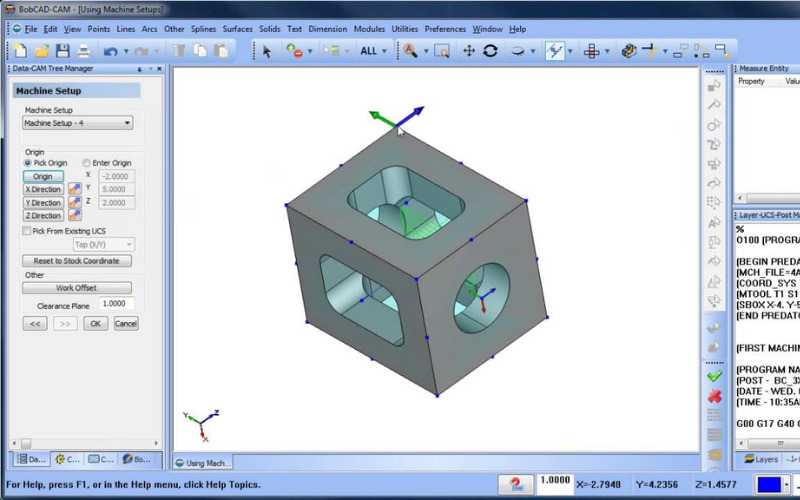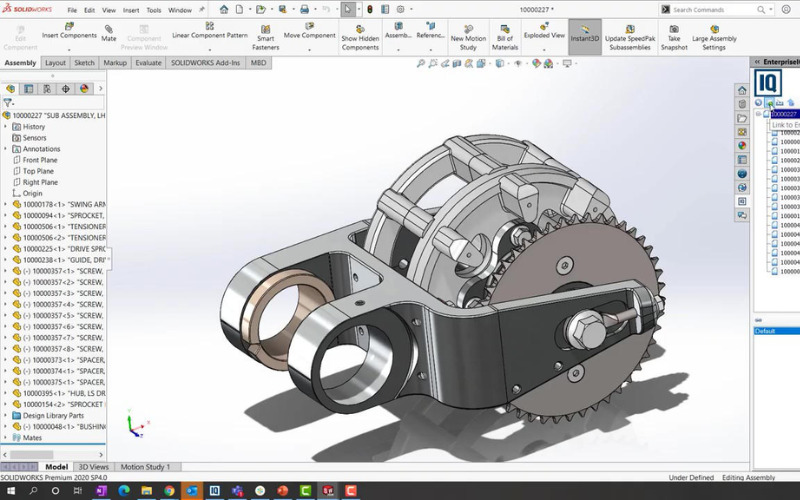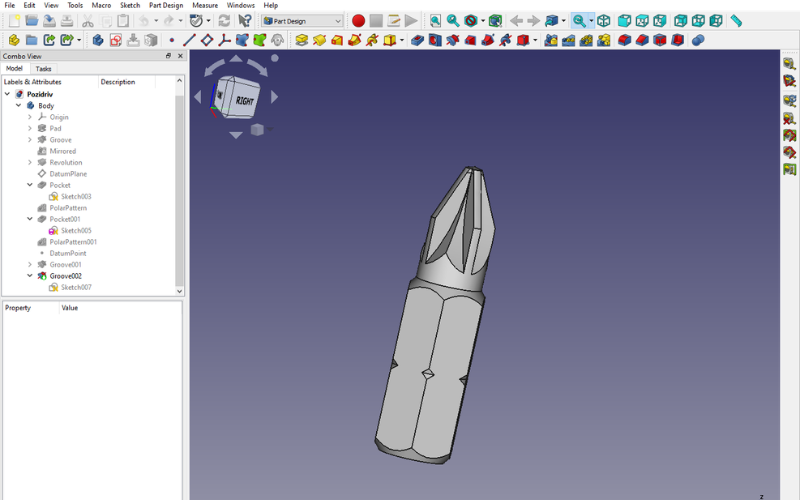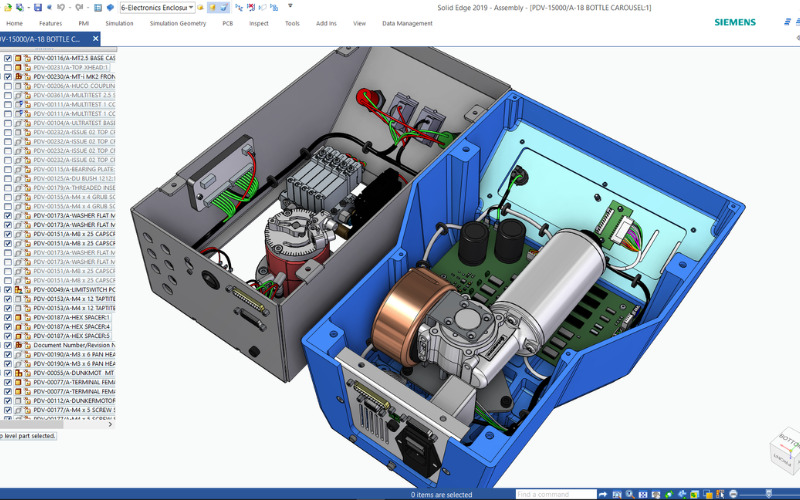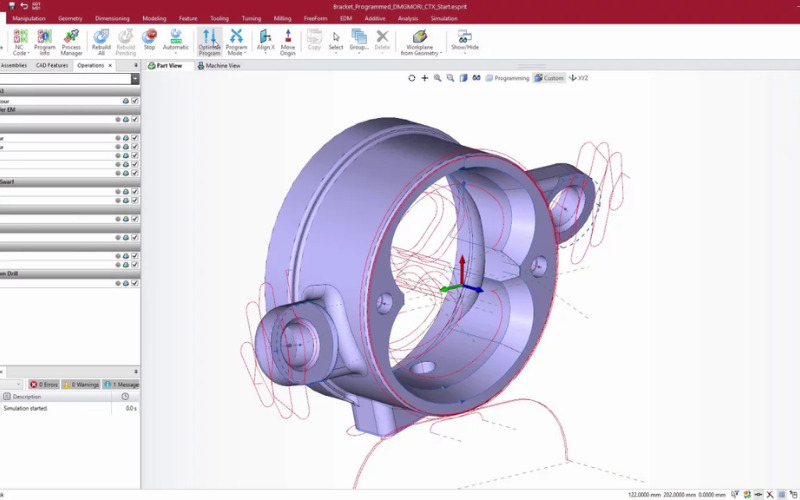Many industries, including manufacturing, architecture, engineering, and construction, employ CAD/CAM software. Using CAD (Computer-Aided Design) software, items, structures, and buildings may be designed in 2D and 3D. CAM (Computer-Aided Manufacturing) software is used to generate toolpaths and instructions for CNC (Computer Numerical Control) machines, which are used to construct objects. It enables designers to produce intricate models and visualise their ideas before construction. The 3D design produced in CAD software is brought into CAM software, which has instructions for the CNC machine to follow. These softwares can also perform simulations and tests to enhance the design and discover any possible issues. Below are a few of them:
1. Solidworks
Solidworks is a 3D CAD software that makes it easy for users to build and design models and assemblies. It is a popular option in the manufacturing and engineering since it provides various tools and capabilities, such as visualisation, simulations, and data management.
2. Autocad
Autodesk created the well-known 2D and 3D CAD tool Autocad. It is used in the architectural, construction, and engineering professions. It provides various modelling and drawing tools, including unique options for sketching and designing buildings. It offers several tools, including blocks, dimensions, and layers for sharing, editing, and annotating designs.
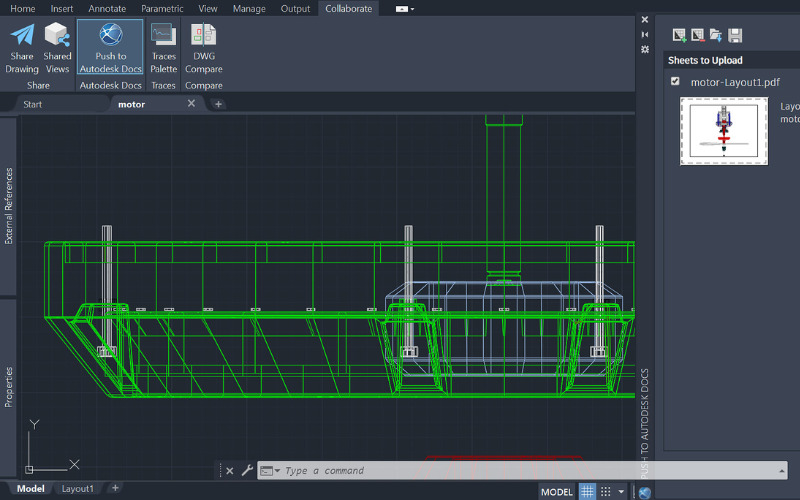
3. Fusion 360
For the manufacture and design of products, Fusion 360 is a cloud-based 3D CAM, CAD, and CAE software. It provides tools for creating toolpaths for CNC machines and capabilities like animation, rendering, and 3D modelling. It allows editing and creating parametric models, animations, and renderings, using tools such as sketching, surface modelling, and sculpting.
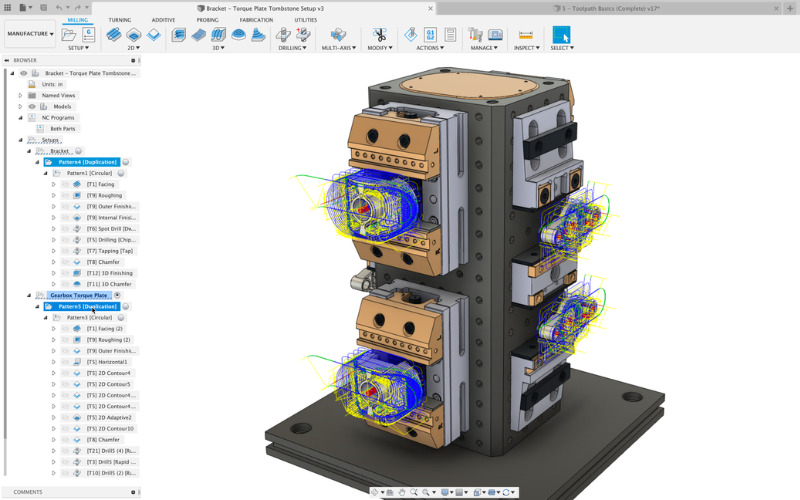
4. Catia
The 3D CAD tool Catia was developed by Dassault Systemes. It is used in the automotive and aerospace industries to create complicated components and assemblies. For the creation of 3D models, it offers a variety of techniques, such as surfacing, sheet metal design, and parametric modelling. Additionally, it has tools for kinematics, product data management, and simulations.
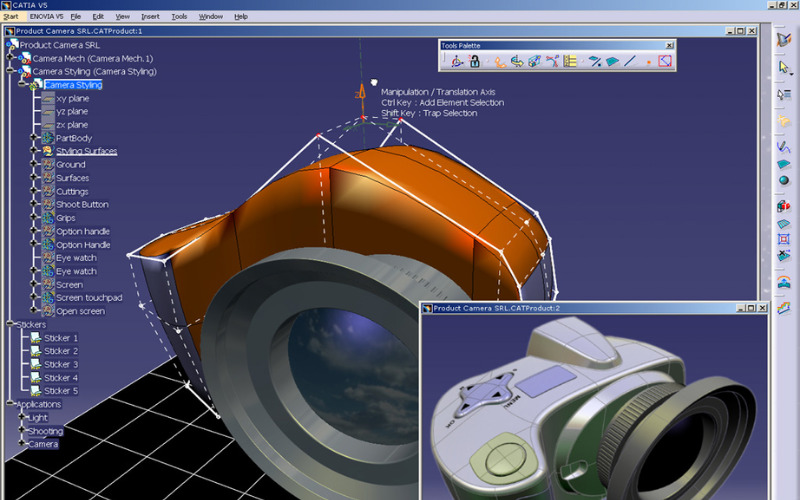
5. Inventor
Autodesk created the 3D CAD software Inventor. In the manufacturing sector, it is used to design mechanical parts and assemblies. In addition to offering tools for modelling and sketching in three dimensions, Inventor also has specialised tools for weldments, fabricating sheet metal components, and piping systems. Additionally, it has tools for graphics, data management, and simulations.
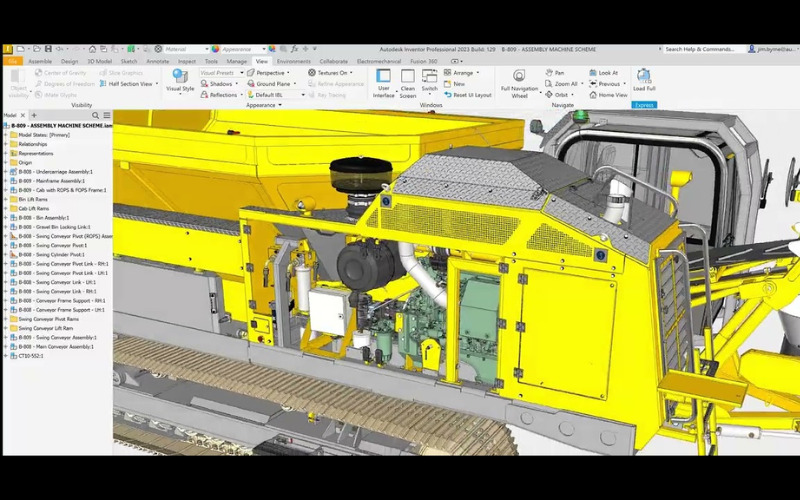
6. Onshape
PTC created the cloud-based 3D CAD tool Onshape. Teams can work on the same project concurrently from anywhere because it is made for collaboration and sharing. For the creation of 3D models, Onshape offers a variety of options, such as direct editing, parametric modelling, and sketching. Tools for data management, version control, and collaboration are provided.
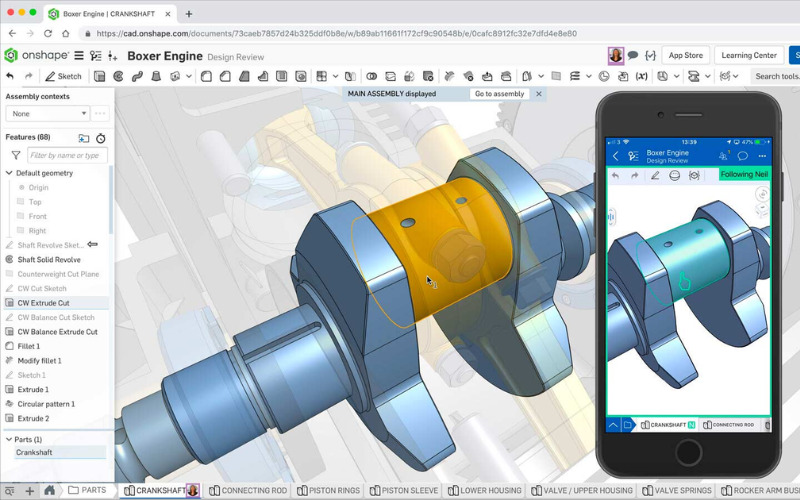
7. Creo
Creo is a 3D CAD software developed by PTC. In the industrial sector, it is utilised to design intricate mechanical components and assemblies. It offers a variety of techniques for creating 3D models, such as surface modelling, direct modelling, and parametric modelling. It also includes tools for graphics, simulations, and data management.
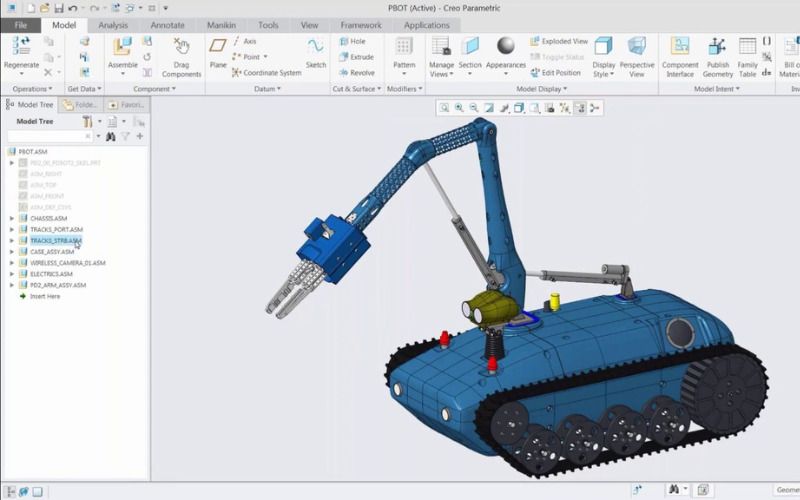
8. Siemens Nx
Siemens Nx is a 3D CAD tool produced by Siemens Digital Industries Software. It is frequently used in the automotive and aerospace industries to create complex mechanical assemblies and parts. It offers a variety of techniques for creating 3D models, such as direct modelling, surface modelling, and parametric modelling. It includes tools for managing data, creating visualisations, and running simulations.
9. Rhino
A 3D CAD tool called Rhino was developed by Robert McNeel & Associates. It is used to create 3D models of intricate surfaces and forms in industrial design, architecture, and jewellery. It offers a variety of tools for building 3D models, including point cloud, mesh, and NURBS modelling.
10. Freecad
A 3D CAD software called Freecad is developed to create 3D models of buildings, mechanical components, and other designs. Its modular architecture enables the addition of plugins and extensions to expand its usefulness. It has tools for simulation, parametric modelling, and 2D sketching.
11. Draftsight
Dassault Systemes created 2D CAD software called Draftsight. For producing 2D technical drawings and designs, it is utilised in the engineering, architecture, and building industries. Layout design, annotations, and 2D drawing are the features available. Additionally, it offers support for 3D printing and can export drawings in various formats, such as STL, PDF, and DXF.
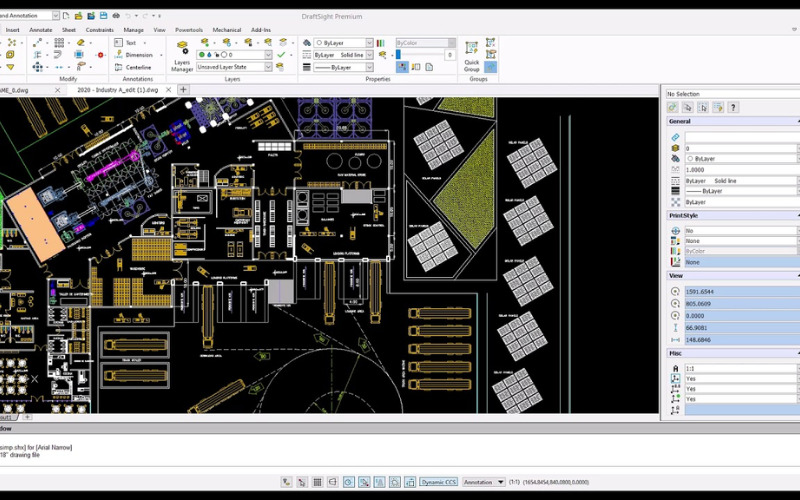
12. Solid Edge
Solid Edge is a 3D CAD software developed by Siemens Digital Industries Software. It is used in the manufacturing, engineering, and product design industries for creating 3D models of mechanical assemblies and parts. It includes features for sheet metal design, direct modelling, and parametric modelling. It is available on Windows.
13. Bricscad
Popular CAD software used in many different industries is called Bricscad. It provides a large selection of skills and features. 2D and 3D modelling, parametric design, support for 3D printing, and compatibility with several file formats are some of its characteristics. With various APIs and third-party applications available to expand its capabilities, it is highly adaptable.
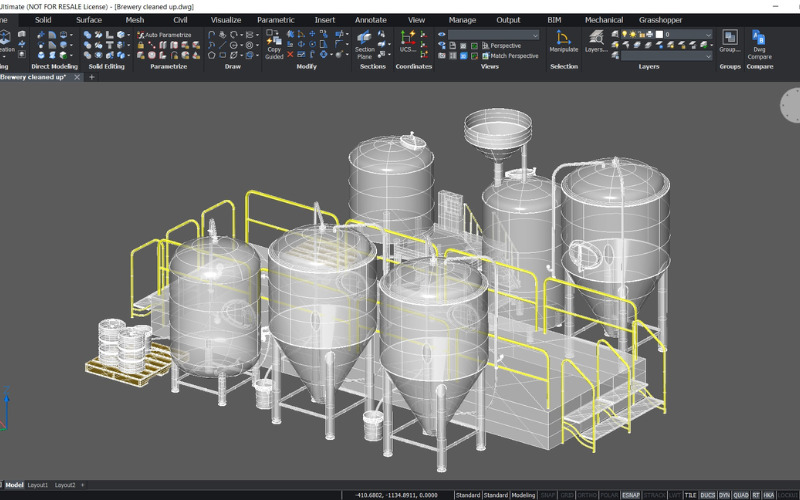
14. Turbocad
Popular CAD software like Turbocad is primarily used in the engineering and architecture sectors. It is renowned for its easy-to-use interface, an extensive toolkit, and a reasonable cost. Its features include support for many file types, photorealistic rendering, parametric restrictions, and 2D and 3D modelling.
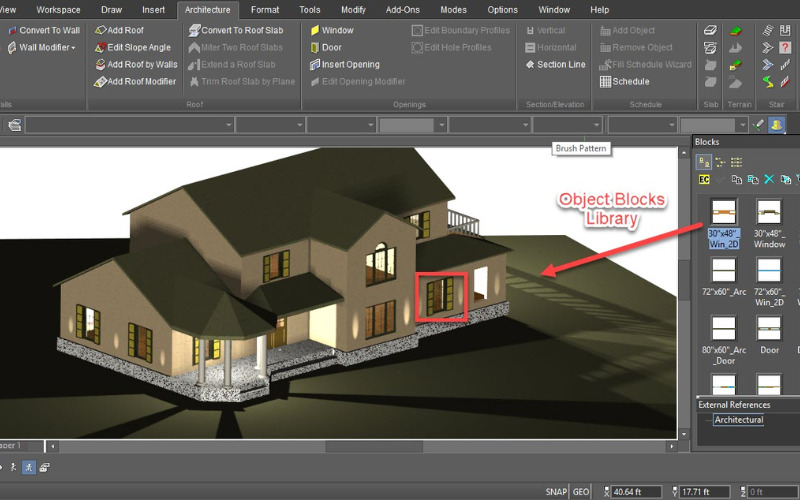
15. Vectorworks
CAD software called Vectorworks is used mainly in the architectural, landscape sectors, and entertainment. It has a wide range of tools, supporting 2D and 3D modelling, and producing precise construction drawings. BIM, entertainment design tools, and landscape are just a few design tools available.
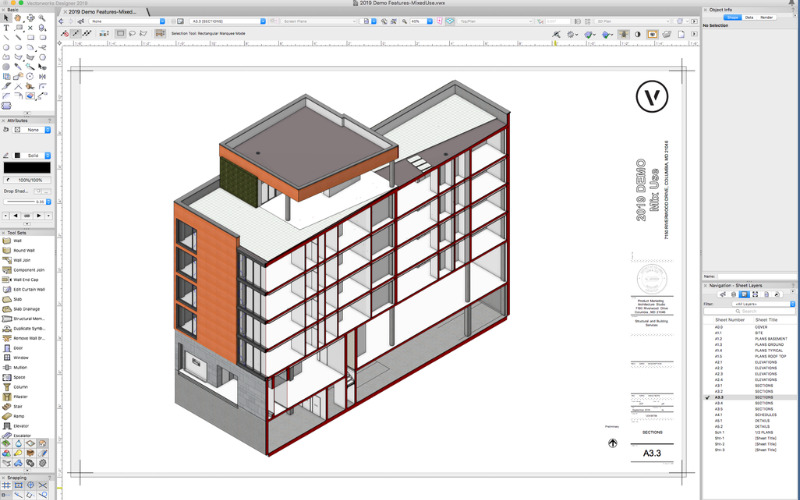
16. Mastercam
Popular CAD/CAM software in the manufacturing sector is called Mastercam. It is well-known for its capacity to design intricate parts, extensive toolkits, and effective toolpath generation. In addition to toolpath development, 2D and 3D modelling, and simulation, it provides several manufacturing and design tools.
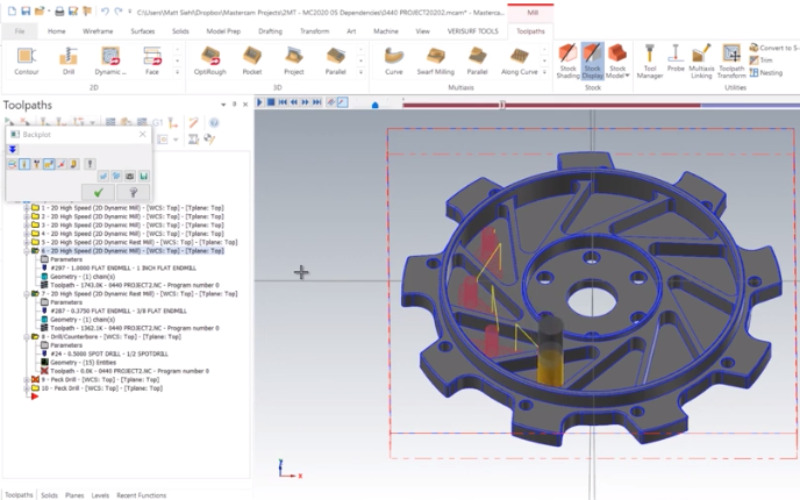
17. Gibbscam
Gibbscam is a CAD/CAM software used in the manufacturing industry. It is famous for its comprehensive toolset, user-friendly interface, and ability to make complex parts. It offers multiple manufacturing and design tools, including toolpath generation, simulation, and 2D and 3D modelling. It supports various machine languages and file formats, making it compatible with various machines and equipment.
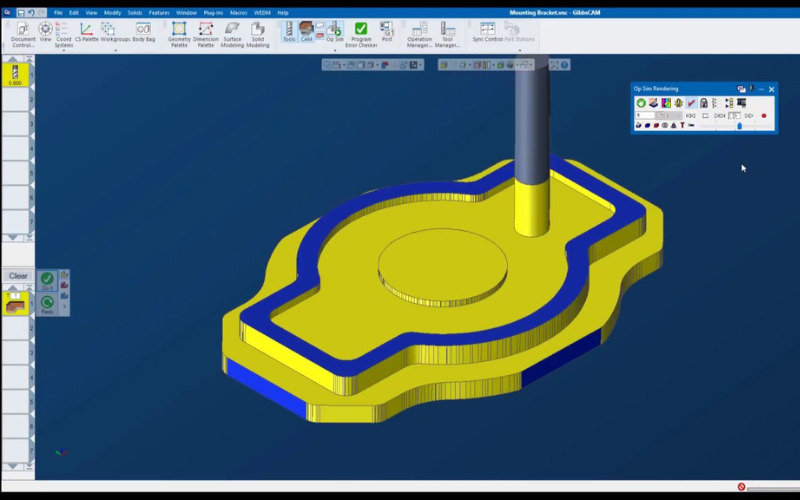
18. Sprutcam
Sprutcam is a CAM software used in the manufacturing industry. It is known for its comprehensive toolset, intuitive interface, and ability to make complex parts. It provides design tools, including toolpath generation, simulation, and 2D and 3D modelling. It endorses various machine languages and file formats, making it compatible with multiple machines and equipment.
19. Esprit
Esprit is a CAM software used in the manufacturing industry. It is familiar for its comprehensive toolset, user-friendly interface, and ability to make complex parts. It offers various manufacturing and design tools, including toolpath generation, simulation, and 2D and 3D modelling. It supports multiple machine languages and file formats, making it compatible with many machines and equipment.
20. Bobcad-cam
Bobcad-cam is a CAD/CAM tool used in the manufacturing industry. It is famous for its comprehensive toolset, user-friendly interface, and ability to make complex parts. It offers various manufacturing and design tools, including simulation, 2D and 3D modelling, and toolpath generation. It supports multiple machine languages and file formats, making it compatible with multiple machines and equipment.
